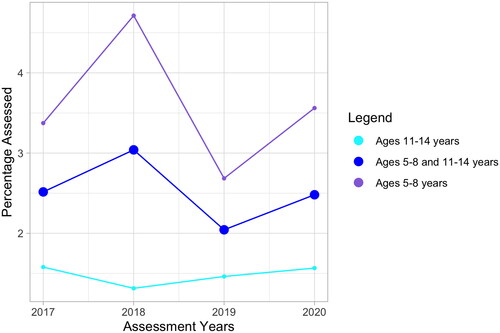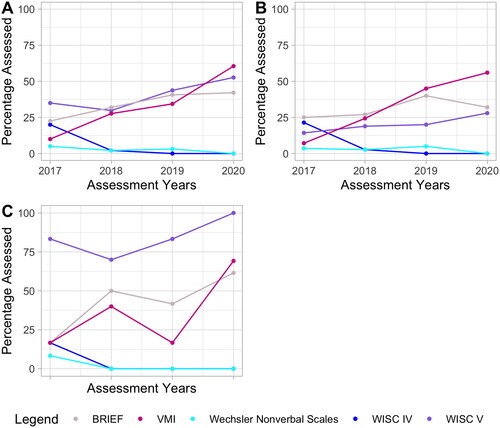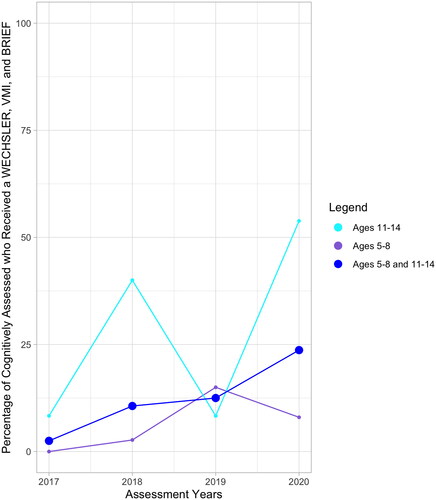Figures & data
Table 1. Relevant background factors of the study sample and their chi-square (χ2) test p-values, presented by outcomes, cognitively assessed and not cognitively assessed*.
Figure 1. The percentage of eligible children across all age groups (5–8 years, 11–14 years, 5–8 and 11–14 years) who were cognitively assessed over the years 2017–2020.

Table 2. Crude odds ratios (ORs), adjusted odds ratios (AORs), 95% confidence intervals (CI), and p-values for univariate and multiple logistic regression models for each predictor variable and the outcome variable, not cognitively assesseda.
Figure 2. Percentage of children who were assessed with the CPCog-recommended assessments (Wechsler Scales, VMI, BRIEF) out of the children who were cognitively assessed over the years 2017–2020. Plot A. Children with CP aged 5–8 years and 11–14 years out of the total number of assessed children in both of these age groups; Plot B. Children with CP aged 5–8 years out of children in this age group only; Plot C children with CP aged 11–14 years out of children in this age group only. CP: Cerebral palsy; VMI: Test of Visual Motor Integration; BRIEF: Behavior Rating Inventory of Executive Function; WISC IV: Fourth Edition of the Wechsler Intelligence Scale for Children; WISC V: Fifth Edition of the Wechsler Intelligence Scale for Children.

Figure 3. Plot shows the percentage of children (aged 5–8 years, 11–14 years, and both) who received all three CPCog recommended assessments, a Wechsler*, Visual Motor Integration (VMI), Behavior Rating Inventory of Executive Function (BRIEF), out of the total number of children who received a cognitive assessment over the years 2017–2020. *Included at least one of the following: Wechsler Nonverbal Scales of Ability, Fourth Edition of the Wechsler Intelligence Scale for Children (WISC IV), Fifth Edition of the Wechsler Intelligence Scale for Children (WISC V).

Table 3. Psychologists’ use and perceptions of alternative and augmentative communication, as reported in CPCog survey data and CPUP registry data.
Table 4. Psychologists’ use and perceptions of interpreters, as reported in CPCog survey data and CPUP registry data.
Summary of CPCog Protocol in Sweden (Phase I). Adapted from Bøttcher et al. [Citation11].
